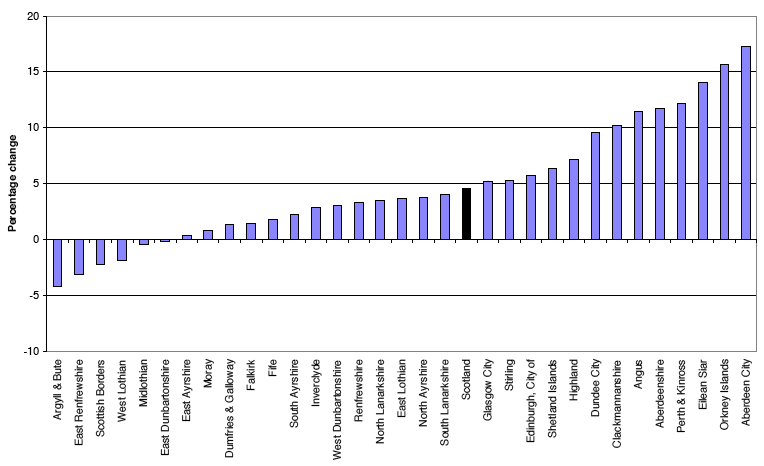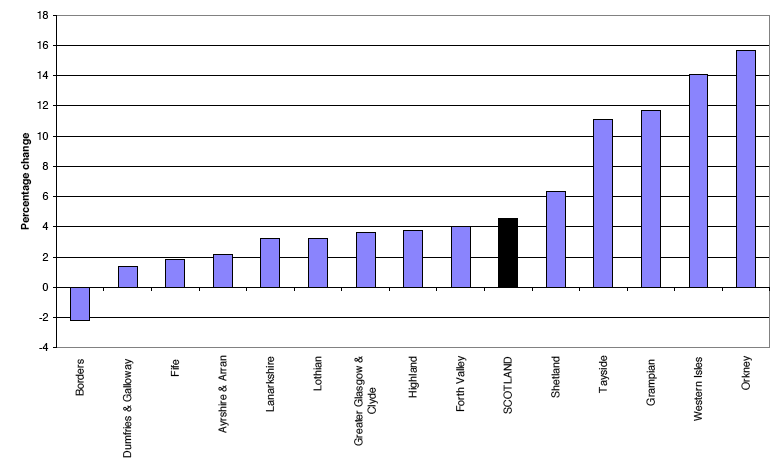
3.1 The differences between the latest sub-national projections and the previous 2004-based projections are summarised in Table 5 which compares the populations of administrative areas under the two projections at selected years (2006, 2011, 2016, 2021 and 2024).
3.2 The 2004-based projection showed Scotland’s population to be 5.11 million by 2006 compared with the 2006 mid-year estimate of 5.12 million. The difference of about 8,400 is mainly due to more people migrating to Scotland than had been assumed although there were also more births and slightly fewer deaths than had been assumed. By 2011 the difference between Scotland’s population under the two projections increases to about 86,000, though some of the difference is accounted for by the higher starting population in 2006. The difference by 2016 is about 144,000 (from 5.13 million under the 2004-based projection to 5.27 million under the 2006-based projection). By 2021 the difference is almost 200,000 and by 2024 around 232,000. There are similar differences by administrative areas under the two projections. These differences are seen in Figure 8 and Figure 9 which show the percentage change between the 2004 and 2006-based population projections in the population projected for 2024, which was the last year of the 2004-based projections.
Figure 8 Percentage difference between projected 2024 population using 2004-based projections and using 2006-based projections, by council area

Figure 9 Percentage change between 2004 and 2006-based population projections in 2024, by NHS board area

3.3 Figure 8 shows that, by 2024, the population of most council areas is higher under the 2006-based projection than under the 2004-based projection. There are six exceptions (Argyll & Bute, East Renfrewshire, Scottish Borders, West Lothian, Midlothian and East Dunbartonshire). In the other council areas, the 2006-based projections are higher, with the biggest percentage increases in Aberdeen City, Orkney and Eilean Siar. Figure 9 shows that by 2024 all the NHS boards have higher populations under the 2006-based projection except Borders. These changes have come about because of the different starting point in the 2006 mid-year estimate and because of the changes to the fertility, mortality and migration assumptions. When looking at the comparisons between the projections it is important to bear in mind the uses and limitation of projections described in Section 6. More details about the assumptions can be found in Section 5.